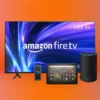What Is Matter? The Smart Home Standard, Explained
Matter Explained
Matter is a global, open-source standard that aims to simplify the smart home ecosystem by allowing internet-connected devices from different manufacturers to simply and securely communicate. This represents an important collaboration between competing companies working towards a common goal: to advance the smart home and make it more consumer-friendly.
Version 1.2 of the Matter smart home standard and certification program officially launched this fall, adding support for nine new device types, including air conditioners, air purifiers, air quality sensors, dishwashers, fans, refrigerators, robot vacuums, smoke and carbon monoxide alarms, and washing machines, bringing the total to 19 compatible device types. The list also includes door locks, gateways, lighting, motion blinds, occupancy sensors, smart plugs, weather devices, platform components, and software applications.
“The adoption of Matter in the market has been rapid, on a scale unseen among previous industry standards,” the CSA says. “There are Matter products from popular and innovative brands across all initially supported device categories, with products and apps in users’ homes, on their smartphones and tablets, and on store shelves.”
Smart home devices are supposed to make your life easier and more convenient, but installing a bunch of disparate internet-connected devices that don’t work together might complicate it instead. That’s where Matter comes in.
Based on the internet protocol (IP), Matter is designed to help manufacturers more easily build devices that are compatible with Amazon Alexa, Apple Siri, Google Assistant, and other smart home and voice platforms, the CSA says. The idea is to break down walled gardens in the smart home and foster interoperability among devices, regardless of brand, so you can seamlessly set up and control them via your platform of choice.
“Matter changes the game—by making devices easier to set up, in the same way, every time, and work with other smart products in the home,” the CSA explains. Matter-certified gadgets “can be controlled by whichever app, voice assistant, or device is the most convenient.”

